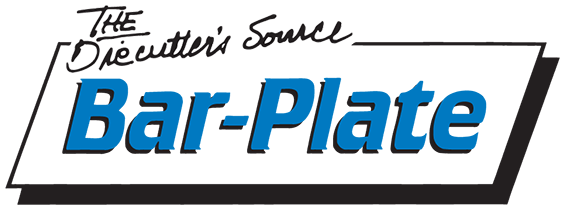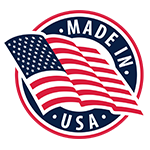Retail Boxes: The Art of Packaging Your Brand
In today’s competitive retail landscape, standing out on the shelf is crucial for brands looking to capture consumer attention. One of the most powerful tools at a retailer’s disposal is the packaging design. Retail boxes not only serve as containers for products but also as powerful brand ambassadors. In this article, we’ll delve into the world of retail boxes, exploring their importance, types, customization options, benefits, and how they can help elevate your brand presence.
Importance of Packaging in Retail
The packaging of a product plays a significant role in consumer perception. It serves as the first point of contact between the consumer and the brand, influencing purchasing decisions. Well-designed retail boxes can communicate brand values, evoke emotions, and differentiate products from competitors. Additionally, packaging serves practical purposes such as protecting the product during transit and storage.
Types of Retail Boxes
Cardboard Boxes
Cardboard boxes are versatile and cost-effective packaging solutions suitable for a wide range of products. They come in various thicknesses and can be customized with printing to reflect brand identity.
Corrugated Boxes
Corrugated boxes offer superior strength and durability, making them ideal for shipping fragile or heavy items. They consist of multiple layers of cardboard, providing extra protection against impacts.
Folding Cartons
Folding cartons are lightweight and easily customizable, making them popular choices for retail packaging. They are commonly used for food items, cosmetics, and pharmaceutical products.
Rigid Boxes
Rigid boxes, also known as luxury boxes, are premium packaging options characterized by their sturdy construction and high-quality finish. They are often used for luxury goods and gift packaging.
Customization Options for Retail Boxes
Customization plays a crucial role in creating unique and memorable retail packaging. From size and dimensions to printing and branding, here are some key customization options:
Size and Dimensions
Retail boxes can be tailored to fit the specific dimensions of the product, minimizing wasted space and reducing shipping costs.
Printing and Branding
Printing techniques such as offset printing, digital printing, and embossing can be used to add logos, graphics, and product information to retail boxes, enhancing brand visibility.
Inserts and Dividers
Inserts and dividers can be added to retail boxes to secure products in place during transit and enhance presentation.
Benefits of Using Retail Boxes
Brand Visibility
Eye-catching packaging designs can attract consumers’ attention and make products stand out on crowded shelves, increasing brand visibility and recognition.
Product Protection
Well-designed retail boxes provide protection against damage during shipping and handling, ensuring that products reach customers in pristine condition.
Sustainability
Many consumers are becoming increasingly conscious of environmental issues, making sustainable packaging options like recyclable materials and eco-friendly designs more appealing.
Factors to Consider When Choosing Retail Boxes
When selecting retail boxes for your products, several factors should be taken into account:
Product Size and Weight
Choose packaging that can accommodate the size and weight of your products without compromising on protection or aesthetics.
Branding Requirements
Consider how you can use packaging design elements to reinforce brand identity and communicate brand values effectively.
Environmental Impact
Opt for packaging materials that align with your brand’s sustainability goals and appeal to environmentally conscious consumers.
Trends in Retail Packaging
Minimalist Packaging
Simplicity is key in modern packaging design, with many brands opting for minimalist designs that focus on essential elements and reduce environmental impact.
Eco-Friendly Materials
The shift towards sustainable packaging solutions continues to gain momentum, with more brands embracing recyclable materials and biodegradable options.
Interactive Packaging
Interactive packaging designs that engage consumers through augmented reality, QR codes, or interactive elements are becoming increasingly popular, offering unique brand experiences.
Case Studies: Successful Retail Box Designs
Several brands have successfully leveraged innovative packaging designs to enhance brand visibility and consumer engagement. Examples include Apple’s sleek product packaging and Coca-Cola’s iconic contour bottle.
How to Design Effective Retail Boxes
Designing effective retail boxes requires careful consideration of the following factors:
Understand Your Target Audience
Research your target market to identify their preferences, needs, and pain points, and tailor your packaging design accordingly.
Focus on Branding Elements
Ensure that your packaging design reflects your brand identity and values, using colors, fonts, and imagery consistently across all packaging materials.
Keep Packaging Practical
While aesthetics are important, prioritize functionality and practicality to ensure that packaging effectively protects products and facilitates ease of use for consumers.
Tips for Maximizing the Effectiveness of Retail Boxes
Use High-Quality Materials
Invest in high-quality packaging materials that provide adequate protection and convey a sense of luxury and value to consumers.
Prioritize Functionality
Design packaging that is easy to open, store, and dispose of, enhancing the overall customer experience and satisfaction.
Stay Updated on Industry Trends
Keep abreast of the latest trends and innovations in packaging design to ensure that your retail boxes remain relevant and competitive in the market.
Conclusion
Retail boxes play a crucial role in shaping consumers’ perceptions of products and brands. By investing in well-designed and strategically customized packaging, retailers can enhance brand visibility, protect products, and create memorable brand experiences for consumers.
FAQs
- Are retail boxes only suitable for certain types of products?
- Retail boxes can be customized to accommodate a wide range of products, from electronics and cosmetics to food and beverages.
- What are some eco-friendly alternatives to traditional retail packaging materials?
- Eco-friendly packaging materials include recycled cardboard, biodegradable plastics, and compostable materials like bamboo or sugarcane fiber.
- How can I ensure that my retail boxes stand out on store shelves?
- To make your retail boxes stand out, focus on eye-catching designs, bold colors, and unique packaging shapes that grab consumers’ attention.
- What printing techniques can be used to customize retail boxes?
- Popular printing techniques for retail boxes include offset printing, digital printing, foil stamping, and embossing.
- Is it worth investing in luxury retail boxes for my products?
- Luxury retail boxes can elevate the perceived value of your products and enhance brand prestige, making them a worthwhile investment for premium brands.

